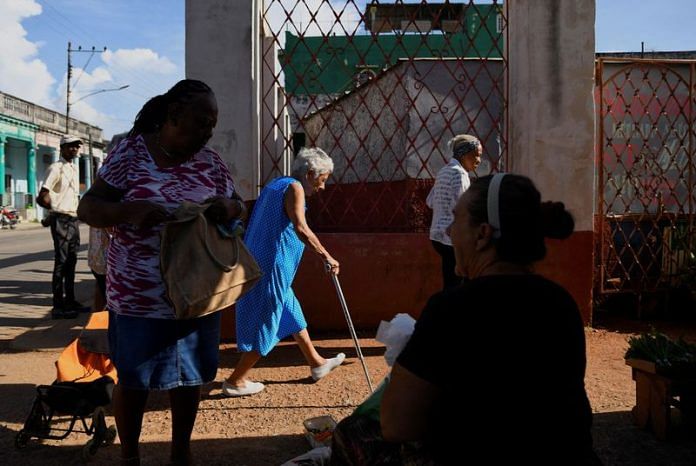By Carlos Carrillo
HAVANA (Reuters) – Cuban lab chemist Deisy Herrera was crushed when her two sons left the island in search of a better life.
“Those were terrible times,” the 61-year old pharmaceutical worker said in tears during an interview at her home in Havana. “When you have kids, you never think they will leave. But we all know the situation here.”
It is no secret that Cuba`s economic crisis has prompted a record-breaking exodus of its citizens – far exceeding similar mass migrations off the island, including the 1980 Mariel boatlift.
But even within Cuba, population scientists debate the scope of the country`s population decline, with recent estimates ranging from around 10% since 2020, to nearly one in five residents in the past two years alone.
“There are other countries where (that) has happened, but they have been in wartime,” said Juan Carlos Albizu-Campos, a Cuba-based economist and population scientist who works for the Christian Center for Reflection and Dialogue in Cuba.
Albizu-Campos, who has studied Cuba`s demographics for 30 years, surprised many in July when he estimated the island`s population had fallen dramatically to 8.62 million, an 18% decline in 2022 and 2023 alone, numbers he described as a “migratory stampede.”
Most Cuban migrants head for the United States.
Juan Carlos Alfonso Fraga, of Cuba`s official statistics agency ONEI, puts the population at 10.1 million, far above Albizu-Campos estimate but still an “important decline” of 10% since 2020.
The difference between the two estimates comes down to technical details that experts told Reuters are best resolved by a census.
But a formal population count has been delayed until at least 2025, officials say.
While the scale of the migration remains unsettled, population experts agree the majority of those leaving are young, able-bodied workers.
Official data has for decades shown that birthrates, too, have dropped dramatically in Cuba, now well short of the rate necessary to replace those who pass away each year.
One in 4 Cubans are now over 60 years old, according to data released by ONEI in July, an increasing burden for the country`s health care system and its economy.
Antonio Aja, director of the University of Havana`s Center for Demographic Studies, says that dynamic – a low birthrate and soaring migration – makes Cuba a standout.
“When you look at the statistics from the U.S., Europe and some countries in South America, you see they are receiving immigrants…and that rejuvenates the population structure,” Aja told Reuters.
“In Cuba`s case, we are losing both population and our young people.”
(Reporting by Carlos Carrillo, additional reporting by Anett Rios, Alien Fernandez, Mario Fuentes and Nelson Acosta, writing by Dave Sherwood; Editing by Alistair Bell)
Disclaimer: This report is auto generated from the Reuters news service. ThePrint holds no responsibilty for its content.



